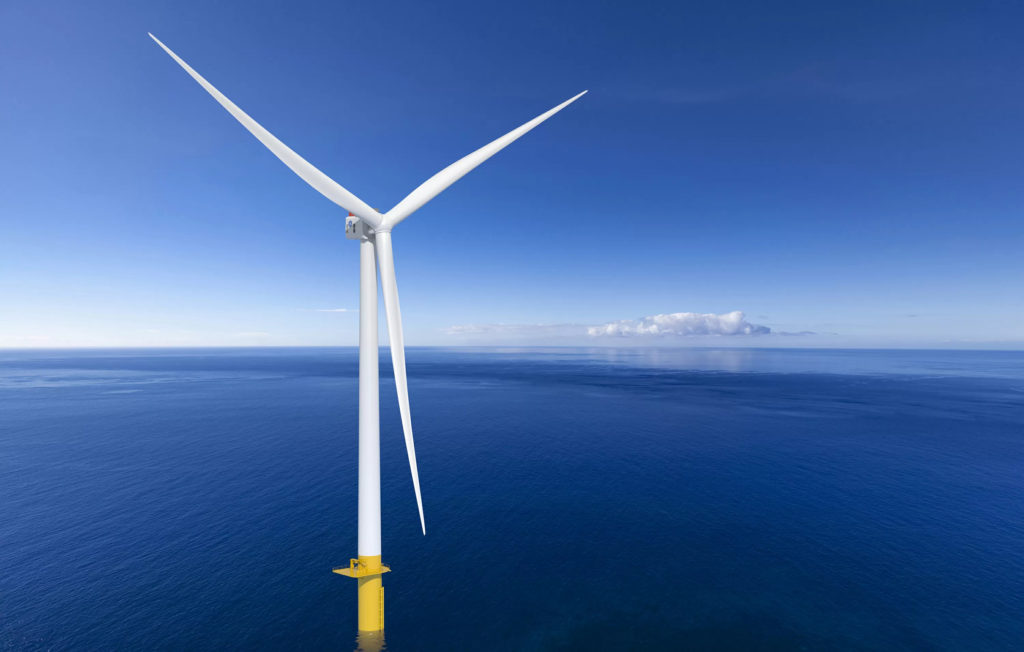US Offshore wind take-off
In the last few months, a lot has been written on the potential take-off of offshore wind in the United States. Now that the US is ‘back in the game’ and is taking up on climate change by rejoining the Paris agreement, offshore wind developers foresee a bright short term future for their projects.
Market development
Not to say that all of the offshore wind markets had come to a stop the last few years[1]. A rough patch in the formal procedures was not withholding the offshore wind market to be lining up for an unprecedented rollout of installed capacity. With this unique and promising startof a new era, the US can take a giant leap and become an offshore wind forerunner. With the GE Haliade-X that just has been certified for 13 MW MW[2][3], , an all-American workhorse is available and other manufacturers are approaching these multi-MW wind turbines. One of the largest projects in development, Vineyard Wind, is now studying contracting turbines with an increased installed capacity of 13 MW each.

Framework for offshore wind development
In many ways, the US geo-governance situation is comparable with the EU. Because the EU-countries had their time for piloting and testing offshore wind in the last decades, they have only just begun with large-scale rollout with a US-state-like perspective and focusing on the success of every single project. This focus can be best explained from a developer’s perspective, which is operating in a market that just stepped out of the introduction phase and entered its phase of growth. Stability for the sake of the project has been key all this time. In order to become more mature, the market should set out a holistic perspective on what it is aiming to become, as the government – being a reliable keeper of public interest – should set out within which boundaries this can be done.
A great first step is the recent publishing of the first Draft Environmental Impact Study (DEIS) within the much anticipated cumulative framework of the Bureau of Offshore Energie Management (BOEM)[4]. With this, the way ahead seems brighter than before. Nonetheless, there are some project related-issues to address, such as the co-existence with shipping and fisheries, but also more systemic issues such as (timely) grid connections, which are capable of dealing with the capacity increase of offshore wind turbines.
To deal with these issues on a more systemic level, a governmental ‘Routemap’ could give guidance on where how the energy will be brought to land and distributed. This ‘Routemap’ should be set out in close cooperation between those States that are literally connected by the relevant TSO’s. In this way raising efficiency, preventing competition on scarce resources, and securing the possibility to further the learning- and development curve of offshore wind energy.
Pondera’s contribution
Pondera has been involved in project-related issues concerning fisheries, shipping lanes, (ecological) cumulative impacts, and potential mitigation measures. Besides this, Pondera is well known for its expertise in site optimization based upon its in-house experts on Wind Resource Assessments (WRA) and has been involved in projects on grid development, environmental impact assessment, tender and contract management for both offshore and onshore projects. Pondera is also known for its solution-based approach: our clients don’t need paper but progress in realizing their projects. Pondera took the step in 2018 to support GE in successfully developing the Haliade-X prototype in the harbour of Rotterdam.
[1] https://www.greentechmedia.com/articles/read/why-2020-has-been-a-surprisingly-good-year-for-us-offshore-wind
[2] https://ponderaconsult.com/en/ponderacontent/haliade-x-prototype-is-now-a-13-mw-turbine/?lang=en
[3] https://www.vineyardwind.com/press-releases/2020/12/1/vineyard-wind-selects-ge-renewable-energy-as-preferred-turbine-supplier
[4] https://www.boem.gov/sites/default/files/documents/renewable-energy/SFWF-DEIS_0.pdf









